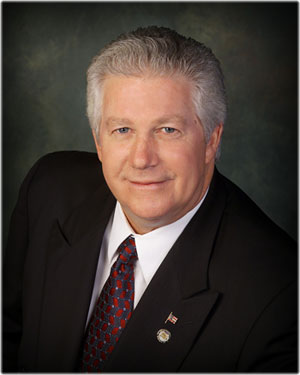Recently I was chatting with Assemblyman Mike Duvall. As has been the case many times since he was sworn in the legislature just over a year ago, he was sharing we met yet another story of how our state government bureaucracy seems to be specifically designed to be dysfunctional. In the case that the Assemblyman outlines below, he is actually going to try and do something about it. I asked him to pen something for FR readers, so here it is… While the topic of "grade separations" isn’t sexy, this is just one of a pile of examples of how messed up things are in Sacramento…
 GRADE SEPARATION FUNDING GETS A FAILING GRADE
GRADE SEPARATION FUNDING GETS A FAILING GRADE
By Assemblyman Mike Duvall (R-Yorba Linda)
With a projected deficit of nearly $15 billion this year and no money left to throw at problems, Sacramento politicians are finally being forced to take a long hard look at how state programs are managed—and what is discovered is often alarming.
A perfect example of this is found in the way the State funds ‘grade separation’ projects. I’ll back up a bit for some background. With nearly half of all the goods coming into the United States entering through California ports, the state has become a maze of train tracks. Since trains have the ‘right of way’ over cars, every time these tracks cross a road they create traffic jams. Moreover, as traffic increases at our ports, the amount of time Californians are forced to wait as trains thunder through our communities is growing rapidly.
In order to address this problem, the state has a program that contains a pot of funds to help localities build ‘grade separations’, which is a fancy term for the place where roads and rail lines cross using an overpass or underpass, so that this traffic congestion can be avoided. Local agencies can tap into these funds and add them to their own so that these projects can be built.
When you really take a look at it, the benefits of these grade separation projects are staggering. They keep communities moving and allow rail commerce to thrive as well.
Despite the significance of this program, the State administers it in an entirely backwards fashion. Localities looking to get state funds for these projects are routed through the Public Utilities Commission (PUC), then through the California Transportation Commission (CTC), and then to the California Department of Transportation (Caltrans). These entities all create separate lists of who should get the money and then set up even more hurdles for localities to jump through. Even then the process isn’t finished.
At the end of the day, after all of this bureaucratic wrangling, the state only has $15 million to give away! This is important, as the average cost for just one project is $26 million. In Southern California near and around my district, these projects often cost up to $100 million apiece. Moreover, these projects are needed all over the state, and in some recent years the state hasn’t even been able to dole out the mere $15 million it has to give away. Does this make sense? Seems to me like a lot of time and money blown on a tiny program.
Of course I’d love to have more money to give to local communities to improve their traffic situation. I know we all can sympathize with that. Unfortunately, given the deficit, we just don’t have the money. What we can do, though, is take a good hard look at this convoluted process and fix it now, so that when we do have more funding it can bypass the bureaucratic mess and go straight to the communities that need it most. As Vice Chair of the Assembly Transportation Committee I will be introducing legislation to completely overhaul this complicated and inefficient system and it will be one of my top priorities for the 2008 legislative year.
[Note: The Publisher of this website is married to a member of Assemblyman Duvall’s staff.]

